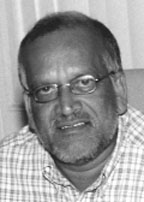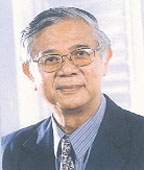Guyana’s aquaculture industry may still be experiencing the challenges of infancy and growth but investors and enthusiasts’ confidence in the sector appears to bode well for its breakthrough.

Well-known Guyanese businessman Beni Sankar is reporting that following three challenging years of learning, the industry may finally have reached a break-even point and that a return on his investment may not be very far away. Sankar has established 25 acres of fish ponds at Hampton Court, Essequibo, once the capital of the legendary Sankar rice enterprise. He is open about the disappointments that have attended his investment in aquaculture. “My predictions were that I would produce 100 tons per year by now. Unfortunately, I am nowhere near that target,” he says.
These days, he and a handful of other investors remain optimistic. They have bought into the research findings of a 2005 report on the potential of commercial aquaculture by consultant Dr Eric Hanson titled “Fast Track Sector Development: Commercial Aquaculture Action Plan,” prepared for the Govern-ment of Guyana and the Inter-American Develop-ment Bank.
The Hanson report hypes the potential of the local aquaculture sector, asserting that local infrastructure developed for rice production can de adapted for commercial aquaculture. It estimates that the cost of developing a ten-acre aquaculture operation comprising five ponds would be US$15,000. The estimate gives cause for considerable optimism since it indicates that a one-acre tilapia aquaculture facility could yield around 25,000 pounds of fish and bring the investor US$75,000 in export earnings. According to the report a 1,000-acre aquaculture operation can yield up to between US$50 million-US$60 million in exports. The “numbers,” Sankar says, amount to “a good return on investment.”
Sankar and a small group of aquaculture enthusiasts, encouraged by the Hanson Report, have established a National Aquaculture Group (NAG) a forum designed to facilitate discussion among investors on their respective experiences in the sector.
Retired Chief Executive Officer of the Institute of Private Enterprise Develop-ment (IPED) Dr Leslie Chin, a passionate aquaculture enthusiast and a member of NAG, appears consumed by the prospects that the sector holds for the Guyana economy. His prediction is that by 2015, aquaculture could become “the leading economic sector in Guyana” and that its returns can contribute significantly to both export earnings and poverty reduction.

Dr Chin has been the driving force behind what has become an active IPED interest in the aquaculture. Indeed, IPED projects that within the next five years Guyana could boast 30,000 acres of fish pond employing 3,000 farmers and outdoing even gold in its contribution to the country’s economy. The institute has itself proposed a scheme under which sugar cane farmers could “contract out” 10-acre fields lying fallow. These fields could be stocked with 6,000 tilapia fingerlings and 2,000 hassar fingerlings which could be ready for harvesting in six months.
IPED’s own projected annual return from one acre of this type of cultivation is 20,000 pounds of fish that could fetch an overall return of US$4 million. Net profit from an operation of that size is estimated at US$1.3 million.
However, according to Sankar, the enthusiasm about the potential returns from investment in aquaculture is not universally shared among NAG members. “The people who invested in aquaculture could be counted on the fingers of one hand… Initially, people, including myself, thought that aquaculture involved simply digging a pond, putting fish in and feeding, resulting in the fish being ready for market. We were hoping that by the year 2015 aquaculture would have been the largest earner of foreign exchange. At the rate that we are going now that does not look possible at all,” he says. He concedes that the belated awareness on the part of the group of what he describes as “the science of aquaculture,” has been “a rude awakening,” something which, he says, “we are all grappling with right now.”
What Sankar and his fellow investors have now learnt is that to make aquaculture work the investor has to begin “from scratch. To make it work I had to start producing my own fingerlings and feed in order to bring the cost of production down. Otherwise, I would have been out of the business.”
The industry, he says, has been thrown a lifeline with the recent establishment by the Ministry of Agriculture of an Agricultural Export Diversification Project which focuses on providing export support services for three sub-sectors in the agricultural sector, fruit, vegetables and aquaculture. Each of the three sub-sectors is propelled by a working group that serves as a liaison between government and farmers.
Sankar is pushing for the aquaculture working group to develop its own independent technical capacity. He wants to see the establishment of a specialist capacity with the group which can make ongoing assessments of the state of the aquaculture industry and provide government with feedback on the needs of aquaculture particularly in the areas of feed production, fingerling production and growth and pond and form layout and design.
Sankar is also advocating the centralization of aquaculture to avoid what he said would be the resulting “chaos” of “digging ponds all over the place.”
Sankar says that investment in the sector is still considered to be “risky business.” NAG itself may have several members, but the industry has far fewer converts. Sankar feels that government can play a role in boosting investor confidence in the sector by providing incentives for large investors prepared to establish 1,000-acre operations in a single area.





